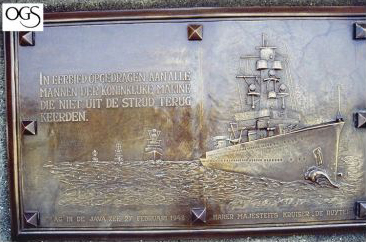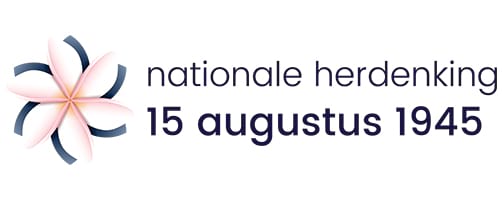
War cemeteries in Indonesia
Not only members of the armed forces are buried in the Dutch war cemeteries in Indonesia but also civilian victims. Men, women and children of different nationalities; Christians, Jews, Moslims and Buddhists.
Originally there were 22 war cemeteries spread across the whole archipelago, built between 1946-1952 by the War Graves Commission of the Royal Dutch Indies Army. Earth from these 22 war cemeteries was collected in one urn, which was mounted on the National Monument on the Dam, Amsterdam, behind the stone bearing the Dutch coat of arms.
After the transfer of sovereignty, the number of war cemeteries was reduced at the request of the Indonesian government. The human remains affected were taken to the war cemeteries which had been built on Java and were maintained by the War Graves Commission.
The graves of military personnel from the British Commonwealth and 185 Dutch nationals are buried in the Galala-Tantui war cemetery on Ambon. This cemetery was maintained by the British Commonwealth War Graves Commission, as were all other war cemeteries in South-East Asia outside Indonesia.
In 2005, an urn with earth from the eight war cemeteries in Indonesia was placed in the small column at the Indies Monument.
Menteng Pulo, Jakarta
Victims who perished in the Japanese camps and Dutch military personnel who lost their lives during the War of Independence, are buried in the Menteng Pulo War Cemetery. The mortal remains of 3,919 Dutch citizens lie in the war cemetery. There is also a ‘7 December’ Division Monument. Besides the Monument, the cemetery also houses the Simultaan Church with its 22-metre high tower, and the Columbarium, a gallery of recesses with 754 urns containing the ashes of Dutch prisoners-of-war.
Members of the armed forces are buried here as well, among them Generaal S.H. Spoor. A total of 4,270 dead are interred here, including those removed from other war cemeteries in Banjarmasin, Tarakan, Menado, Palembang, Balikpapan, Makassar en Cililitan. The ashes of 728 dead were transferred in urns from Japan and reburied in this cemetery.
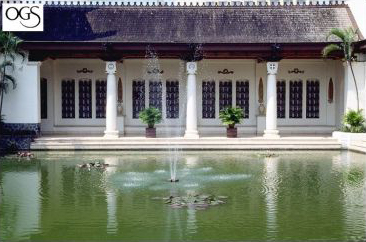
Ancol, Jakarta
Ancol is the war cemetery of the executed, those men and women who had taken part in the resistance. They were executed on this spot and buried in unmarked graves. The dead, whose remains were impossible to identify, were buried in mass graves. It was decided that all those executed both here and elsewhere should find their last resting place here. In total, 2,118 dead are buried here, including those re-buried from Banjarmasin, Medan, Makassar en Mandor.
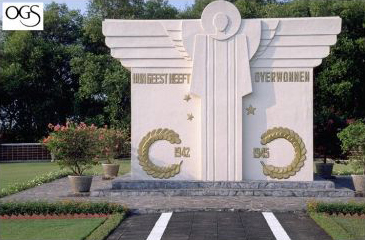
Pandu, Bandung
Pandu War Cemetery has 4000 graves, most of which are of Dutch KNIL soldiers defending the Tjiaterstelling – the last stronghold for Bandung – and military personnel from Japanese concentration camps. The number also includes those re-buried from Muntok, Palembang en Makassar. At the highest point of the War Cemetery hangs a flag, at the foot of which are the names of the places where the greatest numbers of people perished. General Berenschot is buried here too. In Arnhem at Bronbeek estate, there is also a replica of the KNIL Monument in honour of all unnamed graves.
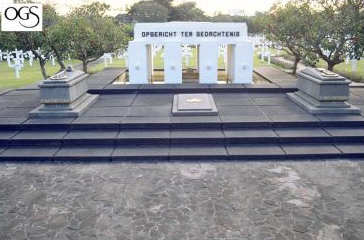
Leuwigajah, Cimahi
Here also is the Junyo Maru memorial stone in remembrance of the torpedoing of the Japanese transport ship which killed 1,600 prisoners of war and around 4,000 Romushas (forced labourers).
Not far from Bandung, just outside the city of Cimahi, lies the Leuwigajah War Cemetery, one of the largest in Indonesia. Alongside the camp victims buried here, there are many military personnel from the Royal Dutch East Indies Army (KNIL) and the Royal Netherlands Army who died during the fight for independence (Bersiap period) following the Japanese capitulation. Leuwigajah became the war cemetery with the largest number of graves due to the many reburials. In total, 5,181 dead are buried here, including those reburied from Muntok, Padang, Tarakan, Medan, Palembang and Balikpapan. At the rear of the Cemetery there is a flagpole, behind which stands the ’Sea Transport Victims’ Monument, a gift from the Junyo Maru Foundation in memory of all victims who perished during sea voyages in South East Asia between 1942 and 1945. Annually on 18th September, there is a commemoration of the Japanese freight carrier Junyo Maru, which was torpedoed on 18th September 1944 near Benkoelen on the west coast of Sumatra. There is also a monument to the sea transport victims on the Bronbeek Estate in Arnhem.
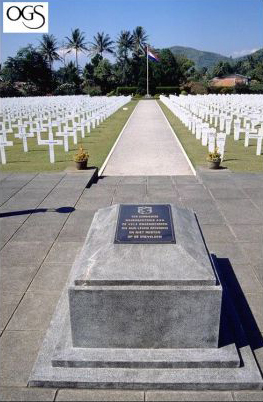
Candi, Semarang
Candi War Cemetery lies in the hills just south of Semarang and was built by Dutch military personnel of T-Brigade who landed on 12th March 1946. Only military personnel who died in the Second World War, the War of Independence (1945-1949) and in Nieuw-Guinea are buried in this cemetery. 1,088 in total. It was built on the initiative of the first contingent of Dutch troops, which arrived in Semarang in March 1946. It includes reburials from Palembang and Makassar.
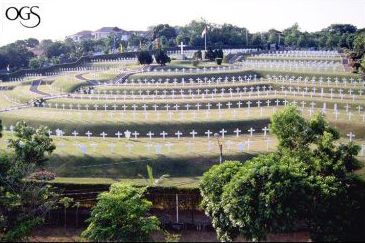
Kalibanteng War Cemetery (Semarang)
Around 3,100 war victims are buried in the Kalibanteng War Cemetery. The vast majority of these victims were citizens imprisoned in the Mid-Java Japanese internment camps such as Ambarawa, Banju Biroe, Lampersari and Karangpanas. The Japanese Women’s Camps Monument and the Japanese Youth Camps Monument were built in remembrance of the large number of women and children buried in this War Cemetery. On Bronbeek Estate in Arnhem there is a replica of this Japanese Youth Camps Monument together with a monument to the Japanese Women’s camps.
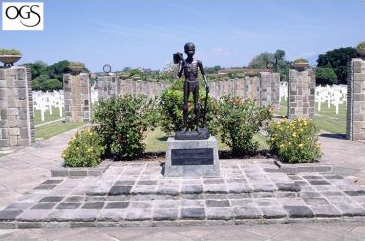
Kembang Kuning War Cemetery (Surabaya)
In the Kembang Kuning War Cemetery in Surabaya, there are civilian victims of the East Java camps as well as military personnel from the Royal Netherlands Army, the Royal Dutch East Indies Army (KNIL) and the Royal Navy. Standing in the centre of this War Cemetery, the Karel Doorman Monument commemorates the Battle of the Java Sea on 27th February 1942. Kembang Kuning is also known as the Sea War Cemetery.
